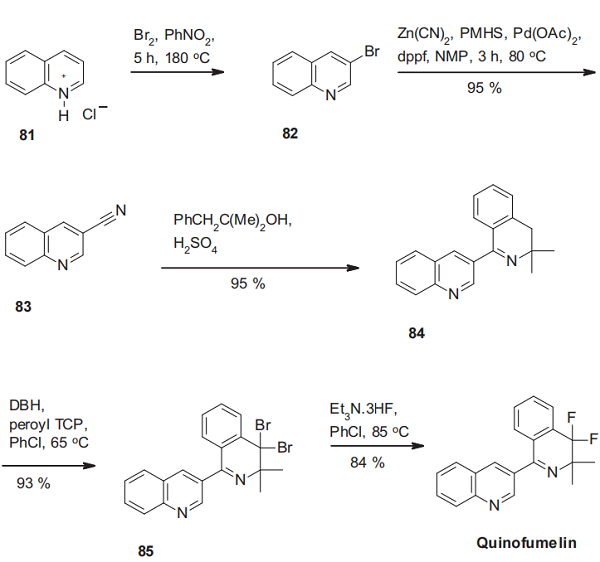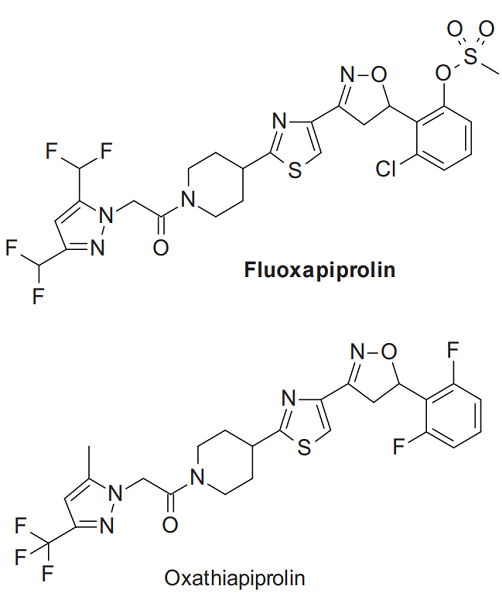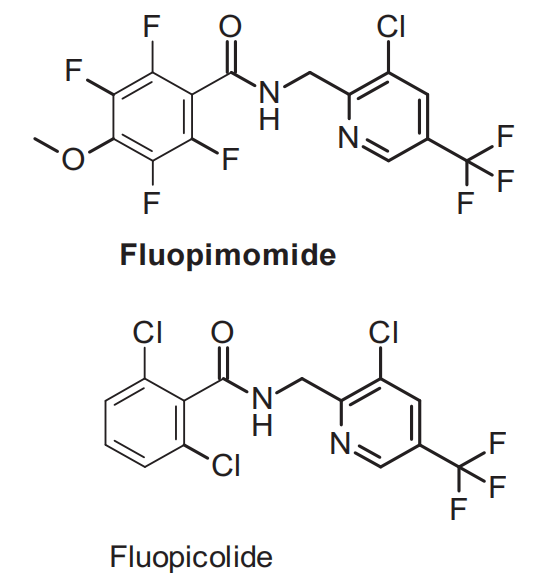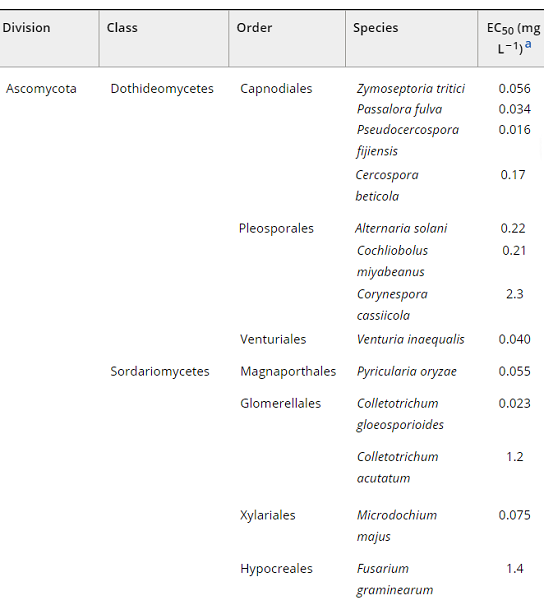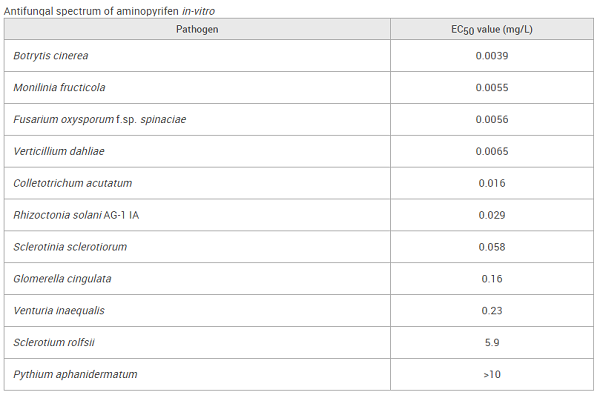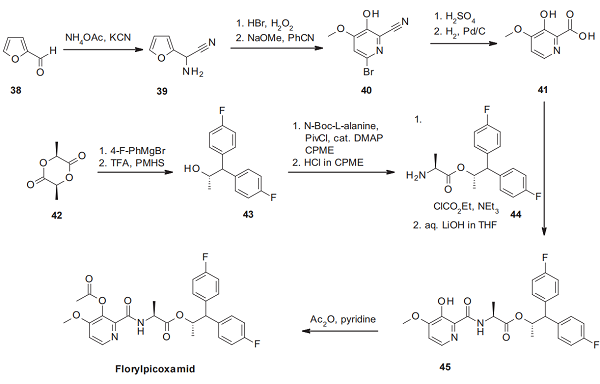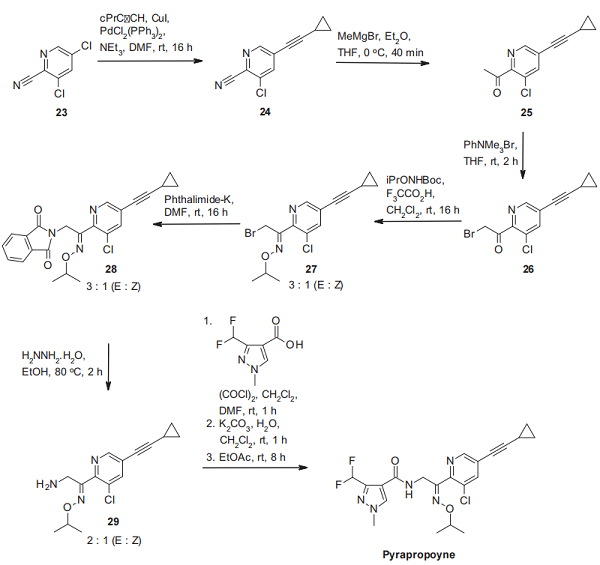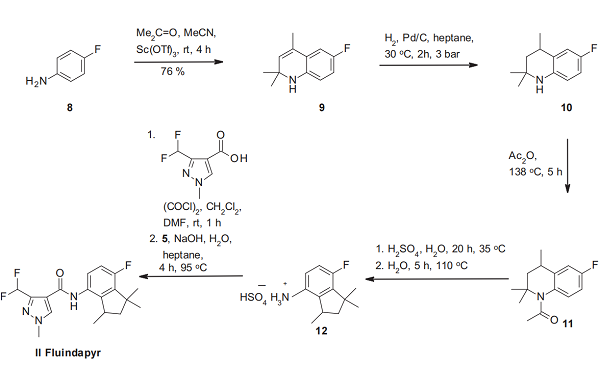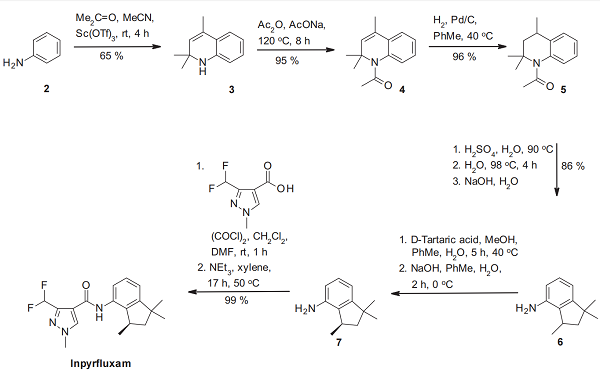Pesticides refer to the kind of chemical reagents used in agriculture for protection crops from disease, insects, rodents and regulating plant growth and killing weed. In addition for being applied to the agriculture, it can also be used in health and epidemic prevention, forestry, animal husbandry, environmental and health aspects. Based on the control object, it can be divided into insecticides, fungicides, miticides, nematicides, rodenticides, herbicides, defoliants and plant growth regulating agents. It has been developed of more than one thousand kinds of pesticides with most of them being made from chemical synthesis while a few of them belonging to biological pesticides. Pesticides used for controlling of harmful insects are called insecticides. Insecticides in early time are mainly biological insecticide (e.g. pyrethrum, nicotine, etc.) and inorganic compounds. Until the 1940s, the discovery and application of DDT and HCH had greatly promoted the rapid development of organic pesticides, leading to the emergence of three categories of organic pesticides including organochlorine, organophosphate and carbamate. In addition to being widely used in agriculture, insecticide can also be applied to home health and other fields. The application of insecticide is an effective method of controlling pests, but long-term use will cause resistance of insect, so that efficacy will decrease. In this case, we need to change to another kind of insecticide.
The synthesis method of Quinofumelin
Quintifumelin is a novel fungicide that demonstrates fungicidal activity against a variety of fungi and potent activity against mold diseases in the fruit and vegetable segment, but also against rice
Feb 18,2024 Chemical pesticides The PTI fungicide- Fluoxapiprolin
Fluoxapiprolin is an another PTI fungicide discovered and developed by Bayer Crop Science in 2012. Its molecular structure is highly similar to that of oxathiapiprolin.
Feb 18,2024 Chemical pesticides How to synthesize Fluopimomide?
Compared to fluopicolide, fluopimomide has a broader fungicidal spectrum. Besides Oomycetes pathogens such as Pseudoperonospora cubensis, it can also control other diseases such as tomato gray mold ca
Feb 18,2024 Chemical pesticides The brief introduction of Pyridochlometyl.
Pyridochlometyl was announced by Sumitomo Chemical Company as a new fungicide in 2017 and has been developed under the code S-2190.
Feb 7,2024 Chemical pesticides Aminopyrifen: Biological activity and Synthesis method
Aminopyrifen, 4-phenoxy benzyl 2-amino-6-methylnicotinate, is a 2-amino nicotinate discovered by Agro-Kanesho with development code AKD-5195.
Feb 7,2024 Chemical pesticides A novel fungicide-Mefentrifluconazole
Mefentrifluconazole is the first marketed novel isopropanol triazole and is the youngest member of the “conazole” family of C14- demethylase inhibitors (DMIs).
Feb 7,2024 Chemical pesticides The synthesis method of Florylpicoxamid
Florylpicoxamid is part of a new generation of QiI fungicides developed by Corteva Agriscience, and can be seen as fully synthetic analog of fenpicoxamid and its active principle UK-2A.
Feb 5,2024 Chemical pesticides How to synthesis Pyrapropoyne?
Pyrapropoyne is under development by Nissan Chemical. This new active ingredient also belongs to the emerging group of SDHIs.
Feb 5,2024 Chemical pesticides How to synthesize fluindapyr?
Fluindapyr is the latest succinate dehydrogenase inhibitor (SDHI) chiral fungicide with a broad bactericidal spectrum and good efficacy.
Feb 5,2024 Chemical pesticides A novel anilide fungicide: Inpyrfluxam
Inpyrfluxam (INDIFLIN) is a novel anilide fungicide that inhibits energy production in pathogenic fungi and is classified as a succinate dehydrogenase inhibitor (SDHI) fungicide.
Feb 5,2024 Chemical pesticides 



